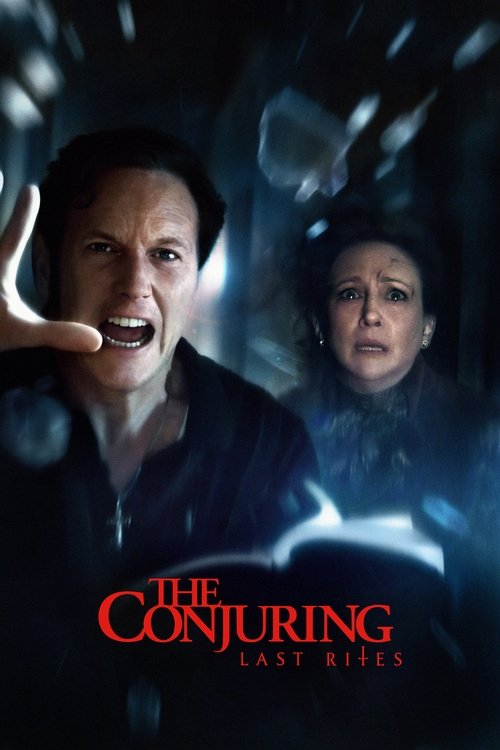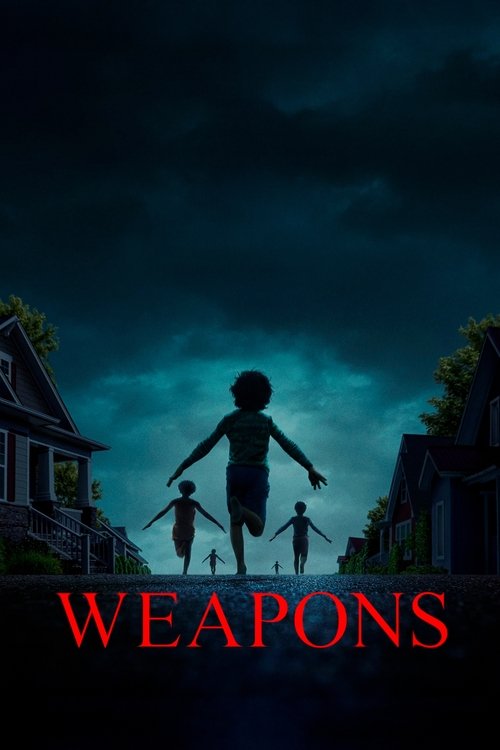
Ask Your Own Question
What is the plot?
Grace Khumalo lives in Durban with her husband, who works as a doctor, and their teenage son Sizwe. She maintains a flamboyant public presence: she dresses sharply, attends charity events, entertains neighbors at the house, and takes pride in the appearance of her property. One morning the routine is interrupted when a moving truck arrives down the street and Bongi Sithole, Grace's former best friend and now long-standing rival, steps out with her own family. Bongi's arrival is quiet at first; she greets neighbors, directs movers, and claims a modest corner of the cul-de-sac for her household. Grace watches from her front stoop as Bongi's family begins unpacking, and the two women exchange a brief, strained greeting across the boundary line. Their handshake is curt, their smiles measured, and the air between them is immediately tense.
The film follows the next weeks in real time, showing domestic rhythms and neighborhood routines. Grace oversees her household and her son's homework, her husband returns from the hospital with the tired, professional gait of a physician, and Bongi and her family begin settling into the adjacent house. At first the two households keep polite distance: shared barbecues are awkward, community meetings are civil, and both women attend the same church service on Sundays. Grace and Bongi avoid private contact, and their acquaintances on the street begin to notice the undercurrent of rivalry. People comment in passing about a disagreement in the past; neither woman volunteers details. The camera lingers on small signs of the schism -- a place-setting dropped from one table at a joint fundraiser, an invitation withdrawn -- but nothing in the opening act reveals the old cause of their estrangement.
The concealed tension changes drastically when Grace discovers that her son Sizwe and Bongi's daughter Sphe are romantically involved. The revelation comes when Sizwe misses dinner and Grace finds a handwritten note tucked inside his soccer bag; the note contains a meeting time and a location on the beachfront promenade where Sphe and Sizwe have arranged to meet. That afternoon Grace follows the note's trail to the seafront and observes Sizwe and Sphe sitting close together on a low wall, speaking in low voices and occasionally touching each other's hands. Grace stands a short distance away and waits until the two teenagers kiss. She retreats without confronting them then returns home, where she confronts Sizwe that evening; he admits the relationship but asks for discretion. Grace reacts by first forbidding Sizwe to see Sphe, making him drop his weekend plans, and calling Bongi to express indignation. The phone conversation escalates quickly: accusations are exchanged, old grievances resurface, and both women hang up angry.
Once the families realize that their children's romance persists, the situation moves from private to public. Grace and Bongi undertake a sequence of escalating, comedic efforts to keep the young couple apart. Grace's initial moves are conventional: she changes household schedules to limit Sizwe's free time, unplugging Wi-Fi during certain hours, prohibiting visits, and enrolling Sizwe in extra tutoring sessions under the pretext of improving his grades. Bongi responds by suggesting stricter curfews and by arranging a group study circle that conveniently excludes Sizwe. Each action the women take prompts a counteraction from the other side, and the responses become more theatrical.
The pair progress into elaborate schemes. Grace persuades a local youth coach to offer Sizwe a scholarship to an afternoon soccer academy; she hopes the extra commitment will leave no time for clandestine meetings. Bongi counters by arranging for Sphe to be invited to a distant cousin's house for weekend chores the same weekend as the academy's tournament. When those manoeuvres fail because the teenagers coordinate their schedules secretly by using a third-party friend, Grace stages a neighborhood fundraiser at her home with a deliberately overcooked menu and a long list of chaperones, intending to keep Sphe occupied under adult supervision. Bongi turns the situation by organizing a simultaneous community clean-up event that pulls Sphe away in the opposite direction. The youngsters adapt: they begin to meet in shorter bursts in places that the mothers cannot easily reach, and they use coded text messages and paper notes to communicate.
Misunderstandings proliferate as the mothers' interventions backfire. At a block party the women both attempt to appear magnanimous while undertaking covert sabotage: Grace arranges for a favorite speaker to arrive late to occupy Sphe, while Bongi assigns a reluctant cousin to monopolize Sizwe's attention. The cousins and neighbors become unwilling participants in the rivalry. Tensions spill into the marketplace when Grace and Bongi both approach the same vendor and begin a loud argument over the last piece of prepared food meant for charity. On another afternoon, Grace secretly distributes a rumor about Sphe's family finances in the hope of making the relationship look unsuitable; Bongi retaliates by questioning Sizwe's ethics publicly during a school fundraiser. Each public confrontation heightens neighborhood gossip and draws in the husbands, who begin to feel pressure to mediate.
As the feud widens, the husbands deliberately maintain a different tone. Grace's husband, the doctor, continues his practice at the local clinic, treating patients, arriving home at variable hours, and listening without judgement as his wife reports new offenses by Bongi. Bongi's husband remains comparatively calm and attempts to de-escalate; he speaks privately to Grace's husband on several occasions, proposing solutions and urging the women to stop involving the children. The two men retain a cordial friendship in contrast to their wives' open hostility, and they increasingly meet alone to discuss practical matters: soccer practice logistics, school schedules, and neighborhood committees. They encourage the wives, privately and later publicly, to reconcile for the good of the families and the community.
The mothers' efforts become more absurd over time. Grace places a fictitious notice at the school claiming that the administration has a new intake policy, hoping to prompt Sphe's family to relocate. Bongi plants a fabricated job opportunity for Sizwe's older cousin in another city with the intended side-effect of making Sizwe unavailable. Both schemes are discovered and denounced at a PTA meeting, where the principal admonishes the parents for manipulating school processes. The PTA meeting turns into a spectacle when Grace and Bongi trade sharp barbs in front of other parents, and the town's gossip machine amplifies every insult. Members of the neighborhood begin to take sides; friends who once attended the same evening prayers now sit apart.
In the days that follow the dispute slides into invasive meddling. Grace hires a private tutor to shadow Sizwe's after-school group; Bongi arranges for Sphe's schedule to overlap with an academic mentorship that requires parental presence. The teenagers innovate again: they coordinate using a locked stash of letters placed in a library book and traded at the end of the day. Their furtive methods eventually come to light when a library volunteer finds the letters written in both minors' hand and brings them to the school counselor. The counselor calls both mothers for a meeting. At the counseling session the women exchange recriminations; the counselor insists that the teenagers' emotional welfare should be prioritized over adult rivalry. The counselor's rebuke opens a fissure in the rivalry: neighbors start to view the feud as harmful and childish.
Pressure mounts toward a public confrontation and a search for a formal resolution. The municipal community center schedules a neighborhood festival and invites both families to participate in a cultural showcase. The festival becomes the stage for the climactic confrontation. In the lead-up the film details preparations: Grace rehearses a rousing speech about community pride; Bongi organizes a traditional dance troupe as a demonstration of cultural authenticity. Both women prepare elaborate stalls displaying family recipes and crafts. The day of the event the square fills with stalls, musicians, clergy, and a line of local dignitaries. The festival program includes communal statements and a plenary session where grievances can be aired. Friends and family fill the audience, whispering about what will happen when Grace and Bongi stand before the crowd.
During the plenary session, the two women present their arguments sequentially. Grace rises first and speaks in a controlled voice about standards and social responsibility; Bongi answers by recounting slights she has endured since the move. The speakers' tones escalate: they accuse one another of undermining family honor and interfering with their children's future prospects. As the two women trade accusations, the television crew at the festival pans in to capture reactions: the husbands watch from the side with concern, the teenagers sit in the front row and exchange anxious glances, and the community elders frown. A moment of heightened emotion arrives when Sphe stands and interrupts the proceedings; she reads aloud a letter she and Sizwe wrote together, urging their parents to stop fighting and describing their genuine care for one another. The letter is a direct appeal and a rebuttal to arguments about social status.
At that point Grace's mother-in-law, who has been present but silent throughout much of the festival, steps forward. She addresses the crowd and issues an apology for past behavior; she acknowledges mistakes she made in the past that contributed to the bitterness between the two women. The apology is specific: she names actions and timeframes, stating instances where she encouraged rigidity rather than understanding. Her words catch both Grace and Bongi by surprise. The husbands seize the moment: Grace's husband and Bongi's husband walk onto the stage and speak in measured tones, telling both women that their animosity harms everyone, particularly the children. They urge them to reconcile, not in abstract terms but by committing to concrete steps: joint family dinners, an agreed code of conduct around the teenagers, and a plan to remove third parties who feed the feud. The husbands' intervention changes the tenor of the event; the crowd shifts from expectation of spectacle to an atmosphere of mediation.
The reconciliation that follows is gradual and awkward. Grace first refuses, crossing her arms and stiffening. Bongi responds by softening her expressions and speaking about shared memories of childhood play and schoolgirl promises made years ago. They recount, in halting sentences, a series of episodes from their past friendship: a long-ago photo of them laughing at a seaside carnival, the way they used to share secrets late into the night, and how a misunderstanding in adulthood severed that intimacy. The film shows these memories through Grace's and Bongi's speech, not through flashbacks; they name particular events that led to the estrangement, aligning current remorse to specific missteps. Their mutual acknowledgement of those events shifts their posture. They hug in a quiet, public way; their embrace is tentative and watched by neighbors who clap or murmur approval.
After the public rapprochement the film portrays follow-up scenes illustrating how the families attempt to normalize relations. Grace invites Bongi to a joint family dinner at her house. The husbands prepare a modest meal together and orchestrate the seating so that the teenagers sit together under adult supervision, demonstrating that continued contact between Sizwe and Sphe is acceptable when overseen. The mothers attempt to repair practical damage: Grace calls neighbors she previously ostracized and apologizes; Bongi volunteers at a school event with Grace by her side, and the two women negotiate boundaries for future behavior. The film records small, concrete actions: Grace removes a disparaging comment from a social announcement board, Bongi returns a borrowed cookbook, and both women publicly thank the volunteers who helped at the festival.
The film closes with a communal scene that marks both reconciliation and cultural specificity. At a neighborhood gathering organized after the festival, the elders share a platter of traditional foods. Grace, encouraged by Bongi and her mother-in-law, accepts the customary challenge to eat a portion of sheep's head--a dish that demands both cultural courage and communal acceptance. She lifts the portion to her mouth, hesitates, and then takes a bite. Her expression changes from apprehension to bemused satisfaction. Neighbors laugh and clap, and Bongi offers a hand to steady her; they share a small, private joke and then step together into the circle of family and friends. Sizwe and Sphe, relieved, stand on the sidelines and smile before joining the adults.
Throughout the film no main characters die; there are no fatal incidents. The narrative ends with Grace and Bongi beginning to repair their friendship publicly and privately, with the husbands continuing to act as mediators and the teenagers given permission to continue their relationship within agreed constraints. The final image freezes on the neighborhood square where the two families socialize together: plates are passed, hands are clasped, and Grace takes another bite of the sheep's head while Bongi laughs. The credits begin to roll as the camera pulls back from the group, leaving the community in a state of renewed cohesion.
What is the ending?
Short Summary of the Ending: The movie "Meet the Khumalos" concludes with a community event where longstanding issues between Grace Khumalo and Bongi Sithole are addressed. Grace's mother-in-law apologizes for past behavior, and the husbands encourage their wives to reconcile. The film ends with Grace and Bongi beginning to mend their relationship, highlighted by a comedic scene where Grace attempts to eat sheep's head.
Expanded Narrative of the Ending:
As the story unfolds, the complex and often comedic relationship between the Khumalos and the Sitholes reaches its climax. The two families, now neighbors, are caught in a web of misunderstandings and rivalry, primarily fueled by Grace and Bongi's unresolved past. The tension escalates when it is discovered that their children, Sizwe and Sphe, are romantically involved, leading both mothers to engage in a series of humorous attempts to separate the couple.
The turning point comes during preparations for a traditional Zulu ceremony, Umemulo, which marks Sphe's transition to womanhood. This event serves as the backdrop for the resolution of the families' conflicts. In the midst of these preparations, a dinner invitation to Zakili, a young aspiring rapper, adds a modern twist to the traditional setting. Zakili's involvement in the ceremony preparations introduces a layer of youth culture, suggesting that tradition and modernity can coexist.
As the ceremony approaches, the families' tensions reach a boiling point. Compromising photos from a photo shoot for Bongi's business, featuring Sizwe and a model, are discovered, leading to a misunderstanding that further strains the relationship between the families. However, it is during the chaos of these preparations that the husbands, Vusi and Desmond, secretly meet at a sports bar, showcasing their amicable relationship despite their wives' animosity.
The climax of the film occurs at the community event, where the Umemulo ceremony is held. It is here that longstanding grievances are addressed, and a path towards reconciliation is laid out. Grace's mother-in-law takes the opportunity to apologize for past behavior, which sets the stage for a more significant reconciliation. The husbands, aware of their wives' ongoing feud, encourage them to put aside their differences and mend their relationship.
In one of the final scenes, Grace is seen attempting to eat sheep's head, a dish that references their shared cultural heritage. This moment is both comedic and symbolic, as it highlights Grace's effort to bridge the gap between her suburban life and her township roots, which Bongi proudly represents. The film concludes with a sense of hope and newfound understanding between the two families, particularly between Grace and Bongi, as they begin to repair their complicated past.
Is there a post-credit scene?
The movie Meet the Khumalos (2025) does not have a post-credit scene. The film concludes with a family dinner where both families, the Khumalos and the Sitholes, share a meal together, symbolizing their reconciliation and cultural bridging. The final comedic moment involves Grace trying sheep's head, a traditional dish, for the first time and spitting it out, highlighting her gradual acceptance of her new friendship and cultural exchange. This ending serves as the film's closing note without any additional post-credit content.
What is the nature of the relationship between Grace Khumalo and Bongi Sithole in the story?
Grace Khumalo and Bongi Sithole were former best friends in high school but are now rivals with a complicated past marked by unresolved conflict. Their rivalry intensifies when Bongi moves into Grace's neighborhood, disrupting Grace's idyllic suburban life and leading to comedic confrontations between them throughout the film.
How do the children, Sizwe and Sphe, influence the story's conflict?
Sizwe, Grace's son, and Sphe, Bongi's daughter, are romantically involved, which escalates the tension between their mothers. Both Grace and Bongi disapprove of their relationship and engage in various comedic and exaggerated efforts to separate the couple, sparking neighborhood disputes and misunderstandings.
What cultural elements are featured in the story?
The film incorporates Zulu cultural traditions, notably Sphe's preparation for her umemulo, a coming-of-age ceremony for Zulu women at age 21. The story also includes references to shared cultural heritage, such as a comedic moment where Grace attempts to eat sheep's head, symbolizing reconciliation and cultural connection.
How do the husbands and other family members contribute to the story?
The husbands of Grace and Bongi remain amicable throughout the conflict and encourage their wives to reconcile. Grace's mother-in-law also plays a role by offering an apology for previous behavior during a community event, which helps to address longstanding grievances and move the families toward resolution.
What comedic situations arise from the mothers' attempts to separate their children?
Grace and Bongi engage in various humorous schemes to break up Sizwe and Sphe, including sabotaging a camping trip the kids plan, trying to send Sizwe abroad to study in Ireland, and even bringing back old flames to tempt the teenagers away from each other. These antics lead to a series of misunderstandings and neighborhood disputes that drive much of the film's comedy.
Is this family friendly?
Meet the Khumalos (2025) is a South African romantic comedy that centers on family rivalries and comedic misunderstandings, with a light-hearted, humorous tone. The film is designed primarily for entertainment and enjoyment, and content is appropriate for general audiences.
There are no indications from plot descriptions or available reviews of particularly objectionable or upsetting scenes for children or sensitive viewers. The conflict revolves around clashing personalities, family disagreements, and over-the-top schemes, typical of family comedies. The humor is largely derived from misunderstandings and exaggerated efforts by the main characters to separate their children, rather than from violence, explicit content, or serious emotional distress.
That said, as with most family comedies, there may be scenes featuring:
- Mild verbal conflict and rivalry between adults: Some heated arguments and sarcastic banter occur, but nothing severe or hostile.
- Misunderstandings and comic deception: Characters may engage in harmless schemes or fibs for humorous effect.
- Culturally specific humor or traditions: For example, a scene at the end involves an attempt to eat sheep's head, which could be unfamiliar or slightly bizarre for some viewers, but is played for laughs and not distressing.
Overall, the movie is family friendly, with comedic situations that are unlikely to upset most children or sensitive viewers. There are no major warnings regarding violence, strong language, or adult content in available information.
Does the dog die?
There is no information available in the search results indicating that a dog dies in the movie "Meet the Khumalos" (2025). The plot summaries provided focus on the comedic family dynamics and the relationship between the main characters, Grace Khumalo and Bongi Sithole, without mentioning any pets or their fate.











